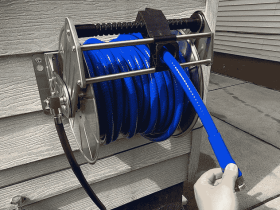Did you buy a new house, or are you renovating an old one? Whatever the case, you need to install electrical outlets at your home. And if you want to do it all by yourself, then you should know about some challenges every homeowner faces when installing electrical outlets in their home.
It sometimes becomes impossible to supply enough electricity to our appliances and devices. How do you know if the wiring is strained? The bulging power wires and tangled cords tell you that. Nothing to worry though! Let’s see what threats and challenges lie in your way so you can be cautious.
List of Challenges Every Homeowner Faces When Installing Electrical Outlets
So, without further ado, let’s get started with what issues a homeowner may face when trying to install electrical outlets.
1. Outdated Electrical Panel
The first and foremost thing to consider when installing electrical outlets is to look at the electrical panel. Remember that all the wires in the floors, walls or even ceilings connect to the electrical panel. It controls and manages your home’s electrical connection to the community’s electric company.
However, many homes do not have an up-to-date electrical panel. It may cause temporary problems with the electrical appliances connected and can prove highly dangerous. Therefore, when installing electrical outlets, remember to look at the panel and replace it if needed. It’s time to redecorate and think about every issue.
2. Overheated Receptacle
An outlet or receptacle isn’t supposed to get extremely heated. If this happens in your home when you turn it on, there’s possibly an electrical wire nearby that needs a replacement.
If you’re confused about hiring electricians, remember that even if hiring a trained electrician may cost you a lot, it prevents further damage to your property. You may operate a heater or any other appliance for which you need safe hands. Hence, the investment may be worth it in the long term. Let a professional handle it.
3. Problematic Lightswitch even after Bulb Replacement
When you’ve already installed a new lightbulb, but the light switch still refuses to work, there may be some serious problem with the wiring. In this case, your best hope is a professional electrician.
Here’s a simple piece of advice: Purchasing LED bulbs for your entire house is, incidentally, in your best interest. They not only last longer, but they also use less energy when they are on. Even experts acknowledge the advantages of LED lighting for energy savings.
4. Exposed Electrical Wires
Beware of exposed electrical wires when renovating the house or installing electrical outlets. Not only can they lead to a faulty electric system for the whole house, but they also can be very risky. If you see such a situation, don’t hesitate to hire a professional to protect both the house’s electrical system and yourselves.
5. Bulging Plugs from a Receptacle
A problem with using worn-out outlets for a long time can be bulging plugs and cords. In some cases, you may also notice that when you plug an appliance into an outlet, it falls out and doesn’t hold.
If not handled immediately, this can become a serious issue, which means you’ll need to replace the outlets entirely. If the issue is persistent with almost all the outlets of your home, consider getting all of them replaced.
6. Irregular Power Surges
Another case when you should consider replacing or reinstalling electrical outlets or lines is when you notice random power surges. Although most times, power surges aren’t in your hand, maybe someone is working on a power line in your neighborhood. However, when the reason for power surges isn’t apparent to you, you might as well think of taking a look at your home electrical lines.
Again, if the power surge in your neighborhood is consistent and regular, you should install quality electrical outlets that can handle this well.
7. Malfunctioning Wiring
If the previous owners of your new home have tried their luck at handling the wiring themselves, there can be faulty wiring depending on their skills and electrical knowledge. When installing new electrical outlets and finding faulty wiring, you must change them immediately.
How do you know if the wiring is faulty? If the switches get hot, buzz, or mildly shock you, that’s when you should call the experts to make the replacement.
8. Overloading Outlets
Living in an era of advanced technology, only one electrical outlet in a room may not be enough to suffice everyone’s needs. Hence, you may need to employ an additional outlet or power strip rather than overloading one; otherwise, the outlet may overload and damage the wiring and the connected appliances.
9. Backstabbed Wires
You must be wondering what it means. With newly installed receptacles and switches, some wires pushed back will come loose compared to those installed around screw terminals. Although the danger level is minimal, these wires can even malfunction the switch or start a fire.
When installing new outlets, check for backstabbed wiring. You can withdraw a receptacle or switch from the outlet box. All you need to do is loosen the wires and re-attach them correctly to the screw terminals on the outlets to avoid further issues.
10. Over-wired Panels
It simply means there are more circuits in the panel than it can handle, maybe because too many one-circuits or single-pole breakers have been replaced by two circuits or tandem breakers in a single slot. A label on every panel shows how many circuits you can accommodate on the panel—even the wire size matters. If the number crosses the accommodation limit, time to call an electrician to inspect the inside of the panel.
The solution is to add some extra slots that’ll cost around $250. However, for further home improvement, you need a larger model to replace the panel, which may cost around $500 to $ 800.
Final Verdict:
Installing electrical outlets on your own can be challenging, even if you are an expert. Especially if you are facing the above challenges, every homeowner faces when installing electrical outlets, you might as well need assistance from an expert electrician if you don’t want to mess things up. Our advice would be to make changes as soon as you notice electrical issues arising for your safety.
FAQs
Who is the cheapest electricity supplier in QLD?
To discover who is the cheapest electricity supplier in QLD for your specific circumstances, utilize comparison websites and consider reaching out to different providers directly. Stay informed about any government rebates or discounts that may further impact your overall costs.











Leave a Review